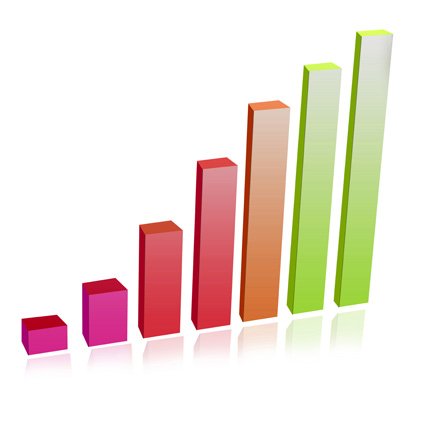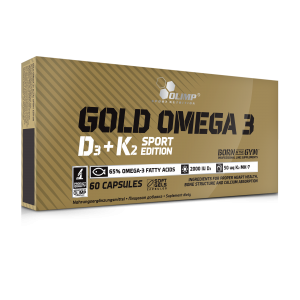Biological value (BV) of proteins

BV 159
A simple interpretation of biological value (BV) of proteins is actually not an easy task! This particular measure of protein nutritional value, out of seven others, has become the favourite with manufacturers of sports supplements. They place it on the label – and you ask: what does it mean? I hope that today's attempt to clarify this issue will be clear and comprehensible! ...
The body of an average adult, healthy, male replaces ca. 140 g of protein each day. Proteins control all life processes, and as a result of their activity they wear out and must be replaced. In adult life, if we are not dealing with extreme physical strain or disease, there is exactly the same amount of new proteins being synthesised as have worn out. The protein replacement rate is measured by means of turnover of nitrogen that builds them – the nitrogen balance. Thus, this value in adults stands at zero, i.e. the balance of nitrogen is maintained.
However, we do not need to consume up to 140 grams of protein a day in order to maintain the nitrogen balance. Half of this amount, i.e. about 70 g comes from protein recycling. These are the body's own proteins (endogenous), once used, and rebuilt again. And so, it is enough to cover the remaining half – the second 70 g – with food.
PROTEINS ARE NOT EQUAL
Scientists have long ago observed that proteins are not equal. Actually, no dietary protein consumed in an amount of 70 g is sufficient to perfectly level the nitrogen balance in the body of an adult male. However, there are proteins that are able to do that already at 75 g, while others need to be consumed in the amount of 120 g.
In the interwar period and after the war, the determination of usefulness of individual dietary proteins was a very important issue, since it allowed to take effective fight against the plagues of hunger affecting different parts of the world. Protein is an essential nutrient, since starved organism dies when it loses half of the nitrogen accumulated in the body proteins.
At that time, two young biochemists – Thomas and Mitchell – came up with a method for determining the biological value of proteins, known by its abbreviation, BV, commonly used to this day.
Without going into technical details of this method, BV informs us about the percentage of a given protein needed to level the nitrogen balance, in relation to the endogenous protein subject to recycling. Putting it into practice: if we know that the biological value of egg white is 88, then in order to level the nitrogen balance we need to eat not 70 g, but about 80 g of it (70 g: 88% = 79.55 g). BV 79 is the biological value of protein in chicken breasts – therefore, to level the nitrogen balance, you need to eat about 89 g of it. The picture is much worse in the case of vegetable proteins. For example, you need to eat as much as 116 g of potato protein, since its BV is barely 60!
BV gained particular popularity at the turn of 20th and 21st centuries, when it was found to be a valuable tool facilitating the planning of a sports diet. In sports, a much higher intake of protein is recommended, since generally we do not deal here with merely levelling the nitrogen balance, but also to creating a positive balance – protein retention in the body. It is the retained protein that enables exercise adaptation and the development of muscle mass, strength and endurance. It is estimated that, on average, the athlete needs are twice larger than the needs of a typical, healthy, not very active man. Thus, a sportsperson should eat not 70 g but 140 g of protein, as calculated for that with BV 100, i.e. endogenous, subject to recycling. Knowing the BV of individual proteins, it is easy to calculate that the egg white is a needed in the amount of ca. 160 g, while chicken – 180 g.
WHY NOT 100? ...
The best dietary protein may have a value close to 100 BV, for instance egg white isolate (BV 99), but cannot exceed it! ... 100 is the reference value, reserved for the endogenous protein for which the amount subject to breakdown (catabolism) and elimination is always optimal in relation to the amount being rebuilt (anabolism). Meanwhile, in the case of each dietary protein, the amount broken down exceeds that being incorporated into the organic structures, which means that to level the nitrogen balance more of it is needed than of the endogenous protein. Hence the BVs of these proteins are below 100.
The existence of proteins with BV greater than 100 is simply impossible. The coefficient of over 100 would mean that more of such proteins is being incorporated in the body than broken down and eliminated, which in itself creates a positive nitrogen balance – an anabolic effect. This contradicts the principal dogma of food science, stating that ingested protein is not stored in the body, the way fat and carbohydrates are.
In adult life, under normal circumstances, if we eat more protein than the limit required for the levelling of nitrogen balance, its excess is degraded and removed from the body – the nitrogen balance is maintained and stands at 0.
If, however, we expose the body to a significant strain, such as a sports workout, it starts to produce more anabolic hormones intensifying the protein synthesis and enabling their retention – creating a positive nitrogen balance. It is hormones, and not directly the level of protein intake, that ultimately determine the value of nitrogen balance! ... For this reason, such hormones, when delivered from the outside, are effective anabolic drugs, used in medicine and the prohibited pharmacological doping.
MORE THAN 100 !?...
When the BV was first determined for a narrow fraction of proteins, known as WPI, isolated from a long underrated dairy technology product – whey (hence the name: whey protein isolate), researchers were stunned !?... BV 159 !?... None of them could interpret such a result. Only after a few years, the scientists were able to make associations and put together the facts.
Generally, all ingested proteins are digested to small amino acids and, as such, absorbed into the body and then rebuilt. Into the blood, and from it to other tissues, only hormone proteins can be absorbed as whole – only the proteins produced inside the body and secreted into the bloodstream by specialised glands. This process is stringently controlled by precise receptor mechanisms. However, the same, precise receptor mechanisms enable the mother to provide hormone proteins to the undeveloped endocrine system of a newborn. It has been observed that the mother’s body secretes hormone proteins not only into the bloodstream, but also to the original baby food – milk. Owing to the presence of appropriate receptors in the gastrointestinal tract, which are sensitive to these hormones, the hormone proteins are able to reach the baby's bloodstream as whole, and from there – the tissues. Some of these proteins are anabolic hormones that are similar to somatotropins that intensively support the growing body. Generally, in adult life, you would never come across them, since, unfortunately, the dairy technologies have successfully eliminated them. Until some mad scientist got the idea to obtain from whey the WPI – a fraction rich in anabolic protein hormones...
IN PRACTICE
In practice, systematic supplementation with the WPI fraction means virtually the same as injecting oneself with a growth hormone. However, in contrast to the hormonal “treatment”, it complies with the sports regulations, does not pose a threat, but gives a measurable health benefit. Not only it develops the muscles, but also enhances resistance to diseases, eliminates free radicals and increases the span of life (in laboratory animals by up to 60%). The BV 159 of the WPI fraction also provides measurable savings in the consumption of proteins. If WPI was to be the only source of dietary protein, an athlete – strongman would need just about 88 g of it only, instead of the recommended 140 g.
However, it should be clearly stated that only the fractions of complete, not denatured, whey protein isolate (WPI) and their hydrolysates demonstrate anabolic effects in the strict sense. Whey protein concentrates (WPCs) are an excellent source of dietary protein with BV 104, the ideal sports supplement, but they exhibit a limited anabolic activity only. You can opt for cheaper WPC whenever you simply wish to supplement your diet with protein of high nutritional value. The much more expensive WPI and its hydrolysate are not just protein supplements, but effective, safe, admitted and healthy anabolics – reach for them whenever you aim for a fast increase in strength and muscle mass.
Sławomir Ambroziak
(IRON 06.2003)
BACK ›

